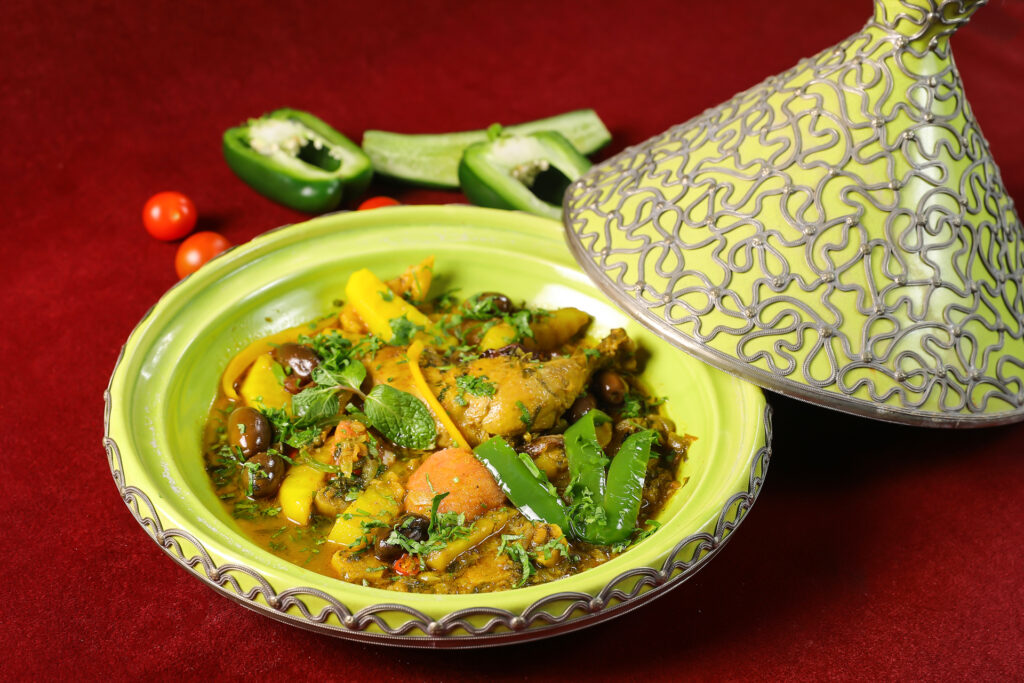
Moroccan cuisine is a treasure trove of bold flavours, vibrant spices, and time-honoured traditions. At its heart lies the tagine, a slow-cooked dish named after the distinctive conical clay pot in which it is prepared. Tagines are more than just meals; they celebrate Morocco’s cultural heritage, with each bite offering a harmonious blend of spices, tender ingredients, and aromatic sauces.
Chef Abdul, a connoisseur of global cuisines, often highlights the beauty of tagines in his culinary repertoire. “Cooking a tagine,” he says, “is like storytelling. Each layer of flavour unfolds as the dish gently simmers, creating an unforgettable dining experience.” Let’s delve into the world of Moroccan tagines and learn what makes them the epitome of slow-cooked perfection.
What is a Tagine?
A tagline is the dish’s name and the clay pot used to prepare it. The pot’s unique design—featuring a wide, shallow base and a conical lid—allows steam to circulate and condense, keeping the food moist and flavorful. This slow-cooking method is ideal for tenderising ingredients and infusing them with spices.
The Art of Cooking in a Tagine
Cooking in a tagine is as much about the technique as the ingredients. Here’s why it’s so special:
Essential Ingredients in Moroccan Tagines
Moroccan tagines are known for their perfect balance of sweet, savoury, and spicy elements. Chef Abdul emphasizes that the magic lies in the spices and the fresh, wholesome ingredients.
Key Ingredients:
Classic Moroccan Tagine Recipes
Chef Abdul often says, “The beauty of tagines is their versatility. Whether you’re a fan of savoury flavours or crave a hint of sweetness, there’s a tagine for every palate.” Here are some classic recipes to try:
A hearty, plant-based dish perfect for any occasion.
Ingredients:
Steps:
It’s a zesty and savoury classic that’s a crowd-pleaser.
Ingredients:
Steps:
This dish is a delightful combination of flavours for those who love a hint of sweetness.
Ingredients:
Steps:
Chef Abdul’s Tips for Perfect Tagines
Serving Tagines: A Moroccan Feast
Tagines are often the centrepiece of a Moroccan meal, accompanied by sides that complement their rich flavours.
Traditional Accompaniments:
“Cooking a Moroccan tagine is about more than following a recipe—it’s about embracing the spirit of slow cooking and letting the ingredients tell their story,” Chef Abdul explains.
Whether you’re making a hearty vegetable tagine, a zesty chicken dish, or a sweet and savoury masterpiece, the process is as rewarding. So, dust off your tagine pot, gather your spices, and transport your kitchen to the heart of Morocco. Bon appétit—or as they say in Morocco, Besseha!
Chef Abdul © Copyright 2024. All rights reserved.